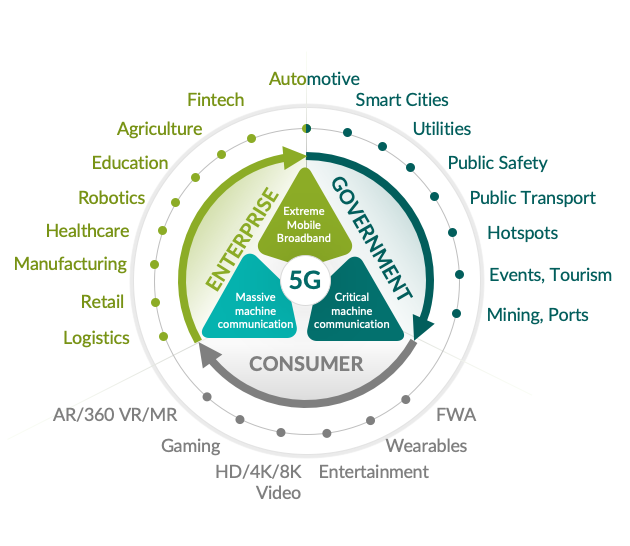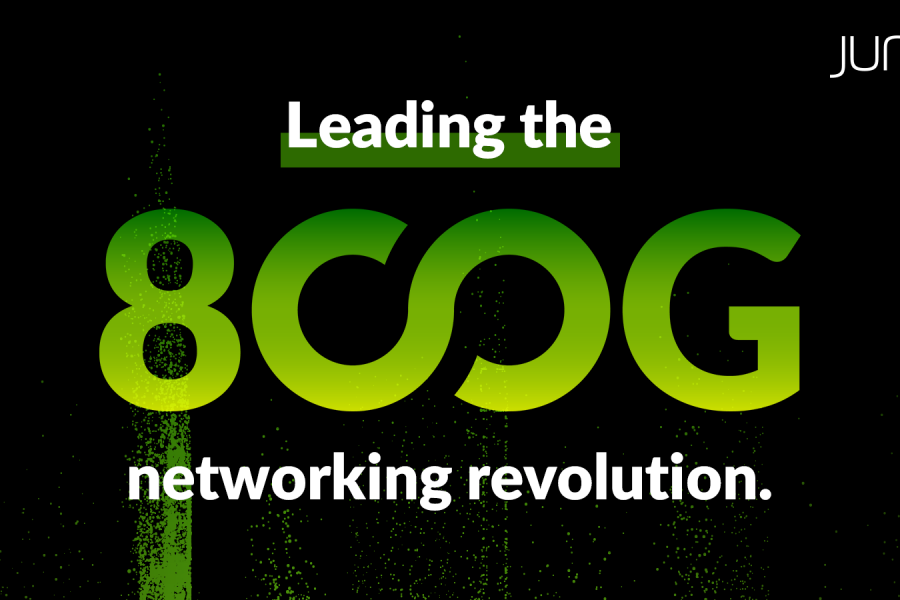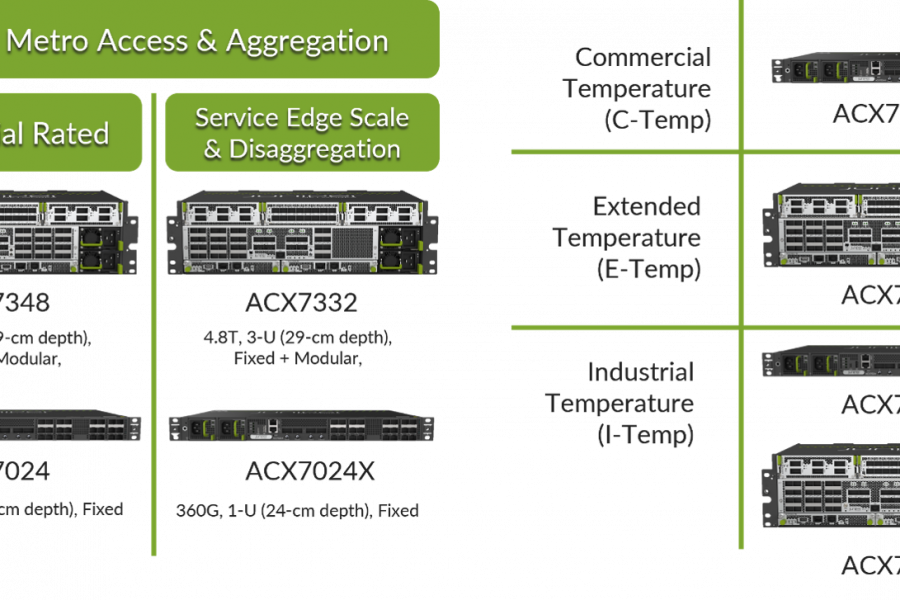Simply put, we don’t know for sure yet.
But we do know a few things, including:
- It is not gigabit broadband, which is table stakes now.
- The concept of a killer application itself may change from being one single application that brings in most of the new revenues, to a host of apps within a larger “domain.”
- The killer segment for the Cloud + 5G + AI Era is Enterprise.
- A killer network may be more important than a killer app. One that can tailor itself to diverse use cases at massive scale, and deliver the perfect experience for each. And one that can serve unknown use cases that are yet to be discovered.
 I must admit that segmenting 5G applications in one of the three technology dimensions of – Enhanced Mobile Broadband (eMBB), Ultra-Low Latency (urLL) or Massive Machine Type Communication (mMTC) – is a bit inapt. Indeed, that is a good way to define how 5G is better than 4G, but is that also the right way to segment applications? When we looked at 100+ 5G applications, we found that most of them cut across two or more technology dimensions. Instead of classifying them exclusively in one of these buckets, it would be better to approach them with the lens of who is using them. That leads us to three segments of ‘Cloud + 5G + AI Era’ applications – Consumers, Enterprises and Governments.
I must admit that segmenting 5G applications in one of the three technology dimensions of – Enhanced Mobile Broadband (eMBB), Ultra-Low Latency (urLL) or Massive Machine Type Communication (mMTC) – is a bit inapt. Indeed, that is a good way to define how 5G is better than 4G, but is that also the right way to segment applications? When we looked at 100+ 5G applications, we found that most of them cut across two or more technology dimensions. Instead of classifying them exclusively in one of these buckets, it would be better to approach them with the lens of who is using them. That leads us to three segments of ‘Cloud + 5G + AI Era’ applications – Consumers, Enterprises and Governments.
Success Factors for Each Segment are Different
Consumer Segment
Service providers are very comfortable with the consumer segment, which is why most of the early 5G launches focus on high speed broadband. The factors for successfully monetizing consumer applications are also not entirely new. These include:
- The right balance between nationwide and targeted coverage: We see a mix of nationwide and targeted deployments, depending on spectrum, geography and capex. There is no perfect formula, the keyword is balance between build-it-and-they-will-come or build-it-as-they-come.
- Great content and partnerships: There are enough analyst reports that suggest 5G ARPUs can be >20% higher with content partnerships (or with their own content, for those who can afford it).
- Affordable 5G pricing versus 4G: Currently, we see a 20-30% premium for 5G services. However, for mass adoption, studies have shown that the pricing must ultimately hit below 5% of GDP per capita.
- Application ecosystem and devices: The more the better!
Enterprise Segment
5G-enabled revenues are expected to reach $3.4 trillion by 2026, of which the biggest contributors are enterprises. That’s why many Tier 1 operators are launching Open Innovation competitions, seeking vertical focus applications and co-innovating with the industry to drill down into the specific enterprise use-cases. While they’ve made the right start, SPs can expect a learning curve, as successfully monetizing 5G for enterprises requires a lot more than they’re used to:
- Focus on few target verticals: Cloud + 5G + AI networks have the potential to transform almost every industry vertical. A practical way to start is to pick the battles.
- Invest in early discovery of ‘problems to solve’: To create value, SPs must dive deep into the challenges of each vertical and find out how a Cloud + 5G + AI network can solve their problems. This requires hiring vertical experts, partaking in industry bodies and investing jointly in R&D.
- Co-created solution model: Enterprises care about business outcomes and that’s why SPs must move from one-size-fits-all type of offerings to tailored, co-created GTM solutions.
- New business models: Needless to say, SPs need to support SLA driven, flexible and shared-risk business models, be it as-a-service or as-a-platform, in line with what enterprises expect.
- Security, Trust & Privacy: These three factors will open doors with enterprises!
Government Segment
While this is not a new segment for SPs who have traditionally participated in building public safety or defense networks, the next decade will require a new engagement model – less as a service provider, more as a public infrastructure partner. There are many success factors, ranging from having the right incentives to drive participation, leveraging Public-Private-Partnerships and ensuring an open, secure and trusted ecosystem is in place. Domains such as autonomous vehicles or smart cities cannot be realized without tight partnerships among vehicle/device manufacturers, governments, service providers and technology/application providers.
Looking Ahead: Predicting the Top 10 Early ‘Cloud + 5G + AI Era’ Application Domains
Based on global momentum, we’ve ranked the top domains to watch per segment below:
- (Consumer) Video/HD/4K/8K (Streaming, PayTV) is a no-brainer. 80% of 5G traffic in Korea is driven by video.
- (Consumer) Cloud Gaming is catching on like wild-fire, as heavy gaming clients are not needed on smartphones anymore. They are rendered from edge clouds with ultra-low latency and high throughput, making multi-player gaming possible on the move.
- (Consumer) E-sports is becoming the new way to experience live sporting events.
- (Consumer/Enterprise) AR/VR/MR application ecosystems are growing fast, be it for gaming or enterprise use cases like collaborative design, tourism or education. This is driving 20% of the 5G traffic in Korea.
- (Consumer/Enterprise) Fixed Wireless Access is now almost on every SP’s 5G launch plan.
- (Enterprise) Industrial Automation is one to watch, earning a lot of attention in the media.
- (Enterprise) Transportation and Logistics, including applications such as Truck Platooning.
- (Enterprise/Government) Drones for surveillance and various remote-controlled applications.
- (Enterprise/Government) Energy, Mining, Utilities
- (Government) Public Safety, especially for first responders.
Autonomous vehicles and remote surgery haven’t made it to our list yet, but given the global COVID-19 situation, they may just be accelerated! In fact, we expect that various contactless services enabled by drones, robots in restaurants and delivery will come to life with Cloud + 5G + AI.
Juniper is Enabling Service Providers to Monetize Cloud + 5G + AI Applications
Juniper helps address all these opportunities with our Cloud + 5G + AI solutions. With a full suite of capabilities such as Distributed Edge Cloud, the NFVI Stack, VNFs, CUPS, any low latency access (5G, Wi-Fi 6 with Mist), Network Slicing, Connected Security, Automated Operations and 5G Enterprise CPE/Firewall, operators can enable services, such as:
- Cloud-Delivered Secure Managed Services: On top of SLA-driven enterprise broadband, SPs can offer services such as SD-WAN, SD-LAN and WiFi, moving toward an AI-driven Enterprise with Wired/Wireless Service Assurance with Juniper. Read more in this blog – SD-WAN and 5G, Friend or Foe?
- Industrial Automation: With Juniper, SPs can offer on-premises private edge and any low latency access to support 5-10 milliseconds round trip latency, low jitter and 6 9s reliability requirements.
- Mixed Reality Use Case: With Juniper solutions, SPs can monetize this use-case with an off-premises edge cloud, secure network slicing to enable ~50 milliseconds latency required for multi-user 3D manipulation.
- CDN-as-a-Service: Juniper has invested in StackPath to help service providers build and monetize the edge cloud, beginning with CDN services.
- Fixed Wireless Access & 5G Wireless Wireline Convergence: A bread and butter use case for SPs and Juniper!
Discover how we’re enabling SP Business Transformation with Cloud + 5G + AI. Join our Juniper Virtual Summit for Cloud & Service Providers on June 10 (US/EMEA) and June 11 (APAC).


